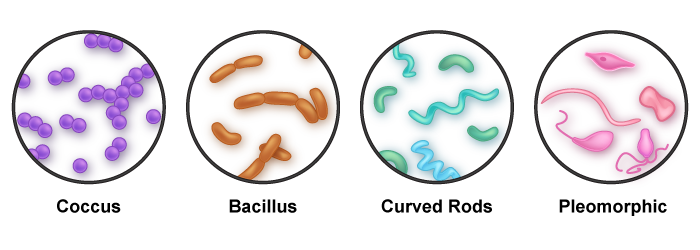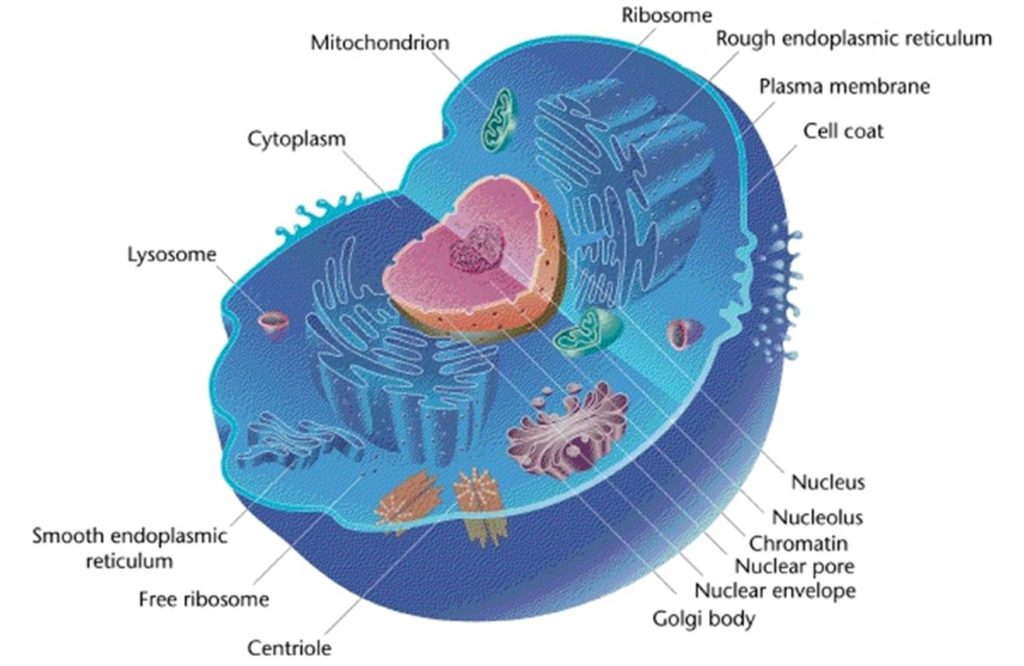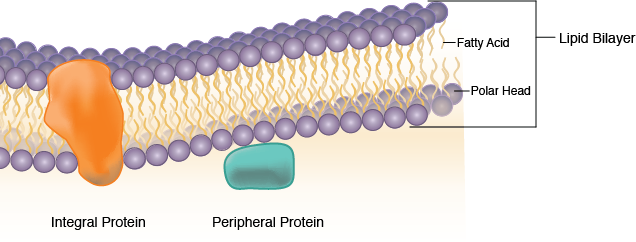3: Cell Structure I
- Page ID
- 10625
\( \newcommand{\vecs}[1]{\overset { \scriptstyle \rightharpoonup} {\mathbf{#1}} } \)
\( \newcommand{\vecd}[1]{\overset{-\!-\!\rightharpoonup}{\vphantom{a}\smash {#1}}} \)
\( \newcommand{\dsum}{\displaystyle\sum\limits} \)
\( \newcommand{\dint}{\displaystyle\int\limits} \)
\( \newcommand{\dlim}{\displaystyle\lim\limits} \)
\( \newcommand{\id}{\mathrm{id}}\) \( \newcommand{\Span}{\mathrm{span}}\)
( \newcommand{\kernel}{\mathrm{null}\,}\) \( \newcommand{\range}{\mathrm{range}\,}\)
\( \newcommand{\RealPart}{\mathrm{Re}}\) \( \newcommand{\ImaginaryPart}{\mathrm{Im}}\)
\( \newcommand{\Argument}{\mathrm{Arg}}\) \( \newcommand{\norm}[1]{\| #1 \|}\)
\( \newcommand{\inner}[2]{\langle #1, #2 \rangle}\)
\( \newcommand{\Span}{\mathrm{span}}\)
\( \newcommand{\id}{\mathrm{id}}\)
\( \newcommand{\Span}{\mathrm{span}}\)
\( \newcommand{\kernel}{\mathrm{null}\,}\)
\( \newcommand{\range}{\mathrm{range}\,}\)
\( \newcommand{\RealPart}{\mathrm{Re}}\)
\( \newcommand{\ImaginaryPart}{\mathrm{Im}}\)
\( \newcommand{\Argument}{\mathrm{Arg}}\)
\( \newcommand{\norm}[1]{\| #1 \|}\)
\( \newcommand{\inner}[2]{\langle #1, #2 \rangle}\)
\( \newcommand{\Span}{\mathrm{span}}\) \( \newcommand{\AA}{\unicode[.8,0]{x212B}}\)
\( \newcommand{\vectorA}[1]{\vec{#1}} % arrow\)
\( \newcommand{\vectorAt}[1]{\vec{\text{#1}}} % arrow\)
\( \newcommand{\vectorB}[1]{\overset { \scriptstyle \rightharpoonup} {\mathbf{#1}} } \)
\( \newcommand{\vectorC}[1]{\textbf{#1}} \)
\( \newcommand{\vectorD}[1]{\overrightarrow{#1}} \)
\( \newcommand{\vectorDt}[1]{\overrightarrow{\text{#1}}} \)
\( \newcommand{\vectE}[1]{\overset{-\!-\!\rightharpoonup}{\vphantom{a}\smash{\mathbf {#1}}}} \)
\( \newcommand{\vecs}[1]{\overset { \scriptstyle \rightharpoonup} {\mathbf{#1}} } \)
\( \newcommand{\vecd}[1]{\overset{-\!-\!\rightharpoonup}{\vphantom{a}\smash {#1}}} \)
\(\newcommand{\avec}{\mathbf a}\) \(\newcommand{\bvec}{\mathbf b}\) \(\newcommand{\cvec}{\mathbf c}\) \(\newcommand{\dvec}{\mathbf d}\) \(\newcommand{\dtil}{\widetilde{\mathbf d}}\) \(\newcommand{\evec}{\mathbf e}\) \(\newcommand{\fvec}{\mathbf f}\) \(\newcommand{\nvec}{\mathbf n}\) \(\newcommand{\pvec}{\mathbf p}\) \(\newcommand{\qvec}{\mathbf q}\) \(\newcommand{\svec}{\mathbf s}\) \(\newcommand{\tvec}{\mathbf t}\) \(\newcommand{\uvec}{\mathbf u}\) \(\newcommand{\vvec}{\mathbf v}\) \(\newcommand{\wvec}{\mathbf w}\) \(\newcommand{\xvec}{\mathbf x}\) \(\newcommand{\yvec}{\mathbf y}\) \(\newcommand{\zvec}{\mathbf z}\) \(\newcommand{\rvec}{\mathbf r}\) \(\newcommand{\mvec}{\mathbf m}\) \(\newcommand{\zerovec}{\mathbf 0}\) \(\newcommand{\onevec}{\mathbf 1}\) \(\newcommand{\real}{\mathbb R}\) \(\newcommand{\twovec}[2]{\left[\begin{array}{r}#1 \\ #2 \end{array}\right]}\) \(\newcommand{\ctwovec}[2]{\left[\begin{array}{c}#1 \\ #2 \end{array}\right]}\) \(\newcommand{\threevec}[3]{\left[\begin{array}{r}#1 \\ #2 \\ #3 \end{array}\right]}\) \(\newcommand{\cthreevec}[3]{\left[\begin{array}{c}#1 \\ #2 \\ #3 \end{array}\right]}\) \(\newcommand{\fourvec}[4]{\left[\begin{array}{r}#1 \\ #2 \\ #3 \\ #4 \end{array}\right]}\) \(\newcommand{\cfourvec}[4]{\left[\begin{array}{c}#1 \\ #2 \\ #3 \\ #4 \end{array}\right]}\) \(\newcommand{\fivevec}[5]{\left[\begin{array}{r}#1 \\ #2 \\ #3 \\ #4 \\ #5 \\ \end{array}\right]}\) \(\newcommand{\cfivevec}[5]{\left[\begin{array}{c}#1 \\ #2 \\ #3 \\ #4 \\ #5 \\ \end{array}\right]}\) \(\newcommand{\mattwo}[4]{\left[\begin{array}{rr}#1 \amp #2 \\ #3 \amp #4 \\ \end{array}\right]}\) \(\newcommand{\laspan}[1]{\text{Span}\{#1\}}\) \(\newcommand{\bcal}{\cal B}\) \(\newcommand{\ccal}{\cal C}\) \(\newcommand{\scal}{\cal S}\) \(\newcommand{\wcal}{\cal W}\) \(\newcommand{\ecal}{\cal E}\) \(\newcommand{\coords}[2]{\left\{#1\right\}_{#2}}\) \(\newcommand{\gray}[1]{\color{gray}{#1}}\) \(\newcommand{\lgray}[1]{\color{lightgray}{#1}}\) \(\newcommand{\rank}{\operatorname{rank}}\) \(\newcommand{\row}{\text{Row}}\) \(\newcommand{\col}{\text{Col}}\) \(\renewcommand{\row}{\text{Row}}\) \(\newcommand{\nul}{\text{Nul}}\) \(\newcommand{\var}{\text{Var}}\) \(\newcommand{\corr}{\text{corr}}\) \(\newcommand{\len}[1]{\left|#1\right|}\) \(\newcommand{\bbar}{\overline{\bvec}}\) \(\newcommand{\bhat}{\widehat{\bvec}}\) \(\newcommand{\bperp}{\bvec^\perp}\) \(\newcommand{\xhat}{\widehat{\xvec}}\) \(\newcommand{\vhat}{\widehat{\vvec}}\) \(\newcommand{\uhat}{\widehat{\uvec}}\) \(\newcommand{\what}{\widehat{\wvec}}\) \(\newcommand{\Sighat}{\widehat{\Sigma}}\) \(\newcommand{\lt}{<}\) \(\newcommand{\gt}{>}\) \(\newcommand{\amp}{&}\) \(\definecolor{fillinmathshade}{gray}{0.9}\)Traditionally, cellular organisms have been divided into two broad categories, based on their cell type. They are either prokaryotic or eukaryotic. In general, prokaryotes are smaller, simpler, with a lot less stuff, which would make eukaryotes larger, more complex, and more cluttered. The crux of their key difference can be deduced from their names: “karyose” is a Greek word meaning “nut” or “center,” a reference to the nucleus of a cell. “Pro” means “before,” while “Eu” means “true,” indicating that prokaryotes lack a nucleus (“before a nucleus”) while eukaryotes have a true nucleus. More recently, microbiologists have been rebelling against the term prokaryote because it lumps both bacteria and the more recently discovered archaea in the same category. Both cells are prokaryotic because they lack a nucleus and other organelles (such as mitochondria, Golgi apparatus, endoplasmic reticulum, etc), but they aren’t closely related genetically. So, to honor these differences this text will refer to the groups as the archaea, the bacteria, and the eukaryotes and try to leave the prokaryotic reference out of it.
Cell Morphology
Cell morphology is a reference to the shape of a cell. It might seem like a trivial concept but to a cell it is not. The shape dictates how that cell will grow, reproduce, obtain nutrients, move, and it’s important to the cell to maintain that shape to function properly. Cell morphology can be used as a characteristic to assist in identifying particular microbes but it’s important to note that cells with the same morphology are not necessarily related. Bacteria tend to display the most representative cell morphologies, with the most common examples listed here:

Bacterial Cell Morphologies.
- Coccus (pl. cocci) – a coccus is a spherically shaped cell.
- Bacillus (pl. bacilli) – a bacillus is a rod-shaped cell.
- Curved rods – obviously this is a rod with some type of curvature. There are three sub-categories: the vibrio, which are rods with a single curve and the spirilla/spirochetes, which are rods that form spiral shapes. Spirilla and spirochetes are differentiated by the type of motility that they exhibit, which means it is hard to separate them unless you are looking at a wet mount.
- Pleomorphic – pleomorphic organisms exhibit variability in their shape.
There are additional shapes seen for bacteria, and an even wider array for the archaea, which have even been found as star or square shapes. Eukaryotic microbes also tend to exhibit a wide array of shapes, particularly the ones that lack a cell wall such as the protozoa.
Cell Size
Cell size, just like cell morphology, is not a trivial matter either, to a cell. There are reasons why most archaeal/bacterial cells are much smaller than eukaryotic cells. Much of it has to do with the advantages derived from being small. These advantages relate back to the surface-to-volume ratio of the cell, a ratio of the external cellular layer in contact with the environment compared to the liquid inside. This ratio changes as a cell increases in size. Let us look at a 2 μm cell in comparison with a cell that is twice as large at 4 μm.
|
|
 r = 2 μm r = 2 μmsurface area = 50.3 μm2 volume = 33.5 μm3 |
The surface-to-volume ratio of the smaller cell is 3, while the surface-to-volume ratio of the larger cell decreases to 1.5. Think of the cell surface as the ability of the cell to bring in nutrients and let out waste products. The larger the surface area, the more possibilities exist for engaging in these activities. Based on this, the larger cell would have an advantage. Now think of the volume as representing what the cell has to support. As the surface-to-volume ratio goes down, it indicates that the cell has less of an opportunity to bring in the nutrients needed to support the cell’s activities – activities such as growth and reproduction. So, small cells grow and reproduce faster. This also means that they evolve faster over time, giving them more opportunities to adapt to environments.
Keep in mind that the size difference (bacterial/archaeal cells = smaller, eukaryotic cells = larger) is on average. A typical bacterial/archaeal cell is a few micrometers in size, while a typical eukarytotic cell is about 10x larger. There are a few monster bacteria that fall outside the norm in size and still manage to grow and reproduce very quickly. One such example is Thiomargarita namibiensis, which can measure from 100-750 μm in length, compared to the more typical 4 μm length of E. coli. T. namibiensis manages to maintain its rapid reproductive rate by producing very large vacuoles or bubbles that occupy a large portion of the cell. These vacuoles reduce the volume of the cell, increasing the surface-to-volume ratio. Other very large bacteria utilize a ruffled membrane for their outer surface layer. This increases the surface area, which also increase the surface-to-volume ratio, allowing the cell to maintain its rapid reproductive rate.
Cell Components
All cells (bacterial, archaeal, eukaryotic) share four common components:
- Cytoplasm – cytoplasm is the gel-like fluid that fills each cell, providing an aqueous environment for the chemical reactions that take place in a cell. It is composed of mostly water, with some salts and proteins.
- DNA – deoxyribonucleic acid or DNA is the genetic material of the cell, the instructions for the cell’s abilities and characteristics. This complete set of genes, referred to as a genome, is localized in an irregularly-shaped region known as the nucleoid in bacterial and archaeal cells, and enclosed into a membrane-bound nucleus in eukaryotic cells.
- Ribosomes – the protein-making factories of the cell are the ribosomes. Composed of both RNA and protein, there are some distinct differences between the ones found in bacteria/archaea and the ones found in eukaryotes, particularly in terms of size and location. The ribosomes of bacteria and archaea are found floating in the cytoplasm, while many of the eukaryotic ribosomes are organized along the endoplasmic reticulum, a eukaryotic organelle. Ribosomes are measured using the Svedberg unit, which corresponds to the rate of sedimentation when centrifuged. Bacterial/archaeal ribosomes have a measurement of 70S as a sedimentation value, while eukaryotic ribosomes have a measurement of 80S, an indication of both their larger size and mass.
- Plasma Membrane – one of the outer boundaries of every cell is the plasma membrane or cell membrane. (A plasma membrane can be found elsewhere as well, such as the membrane that bounds the eukaryotic nucleus, while the term cell membrane refers specifically to this boundary of the cell proper). The plasma membrane separates the cell’s inner contents from the surrounding environment. While not a strong layer, the plasma membrane participates in several crucial processes for the cell, particularly for bacteria and archaea, which typically only have the one membrane:
- Acts as a semi-permeable barrier to allow for the entrance and exit of select molecules. It functions to let in nutrients, excrete waste products, and possibly keep out dangerous substances such as toxins or antibiotics.
- Performs metabolic processes by participating in the conversion of light or chemical energy into a readily useable form known as ATP. This energy conservation involves the development of a proton motive force (PMF), based on the separation of charges across the membrane, much like a battery.
- “Communicates” with the environment by binding or taking in small molecules that act as signals and provide information important to the cell. The information might relate to nutrients or toxin in the area, as well as information about other organisms.

Typical Prokaryotic Cell.

Typical Eukaryotic Cell. By Mediran (Own work) [CC BY-SA 3.0], via Wikimedia Commons
Eukaryotes have numerous additional components called organelles, such as the nucleus, the mitochrondria, the endoplasmic reticulum, the Golgi apparatus, etc. These are all membrane-bound compartments that house different activities for the cell. Because each structure is bounded by its very own plasma membrane, it provides the cell with multiple locations for membranous functions to occur.
Plasma Membrane Structure
When talking about the details of the plasma membrane it gets a little bit complicated, since bacteria and eukaryotes share the same basic structure, while archaea have marked differences. For now let us cover the basic structure, while the archaeal modifications and variations will be covered in the chapter on archaea.
The plasma membrane is often described by the fluid-mosaic model, which accounts for the movement of various components within the membrane itself. The general structure is explained by the separation of individual substances based on their attraction or repulsion of water. The membrane is typically composed of two layers (a bilayer) of phospholipids, which form the basic structure. Each phospholipid is composed of a polar region that is hydrophilic (“water loving”) and a non-polar region that is hydrophobic (“water fearing”). The phospholipids will spontaneously assemble in such a way as to keep the polar regions in contact with the aqueous environment outside of the cell and the cytoplasm inside, while the non-polar regions are sequestered in the middle, much like the jelly in a sandwich.
The phospholipids themselves are composed of a negatively-charged polar head which is a phosphate group, connected by a glycerol linkage to two fatty acid tails. The phosphate group is hydrophilic while the fatty acid tails are hydrophobic. While the membrane is not considered to be particularly strong, it is strengthened somewhat by the presence of additional lipid components, such as the steroids in eukaryotes and the sterol-like hopanoids in bacteria. Embedded and associated with the phospholipid bilayer are various proteins, with myriad functions. Proteins that are embedded within the bilayer itself are called integral proteins while proteins that associate on the outside of the membrane are called peripheral proteins. Some of the peripheral proteins are anchored to the membrane via a lipid tail, and many associate with specific integral proteins to fulfill cellular functions. Integral proteins are the dominant type, representing about 70-80% of the proteins associated with a plasma membrane, while the peripheral proteins represent the remaining 20-30%.

Plasma Membrane Structure.
The amount of protein composing a plasma membrane, in comparison to phospholipid, differs by organism. Bacteria have a very high protein to phospholipid ratio, around 2.5:1, while eukaryotes exhibit a ratio of 1:1, at least in their cell membrane. But remember that eukaryotes have multiple plasma membranes, one for every organelle. The protein to phospholipid ratio for their mitochondrial membrane is 2.5:1, just like the bacterial plasma membrane, providing additional evidence for the idea that eukaryotes evolved from a bacterial ancestor.
Key Words
prokaryote, eukaryote, morphology, coccus, bacillus, vibrio, spirilla, spirochete, pleomorphic, surface-to-volume (S/V) ratio, cytoplasm, DNA, genome, nucleoid, nucleus, ribosome, Svedberg unit, plasma membrane, cell membrane, proton motive force (PMF), fluid-mosaic model, phospholipid, hydrophilic, hydrophobic, polar head, phosphate group, glycerol linkage, fatty acid tail, steroids, hopanoids, phospholipid bilayer, integral protein, peripheral protein.
Essential Questions/Objectives
- Why are microbiologists questioning the traditional ways of thinking about “prokaryotes”?
- What are the 3 basic shapes of Bacteria?
- How do microbes belonging to the categories of Eukaryotes vs. Bacteria/Archaea typically differ in terms of size? How does size impact a cell? What role does the surface:volume ratio play? How can cells get around limitations imposed by the surface:volume ratio?
- What are two ways that bacteria can adapt to being large? Give specific examples.
- What are the basic components of any cell?
- What are the roles of the plasma membrane?
- What is the fluid mosaic model?
- Understand the basic structure of the phospholipids of the plasma membrane and the role that it plays in membrane design.
- What are other lipids found in the plasma membrane?
- What are the 2 categories of proteins found in the plasma membrane and how do they differ?
- How do the phospholipids and the protein come together to form a working plasma membrane?
- What is the importance of the protein to phospholipid ratio in terms of evolution?
Exploratory Questions (OPTIONAL)
- What is the largest bacterium or archaean ever discovered? What is the smallest eukaryote ever discovered?



 r = 1 μm
r = 1 μm